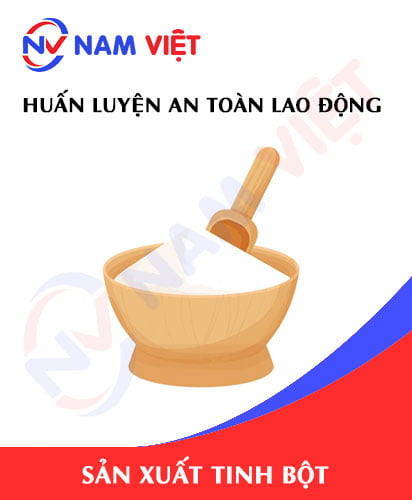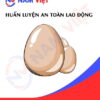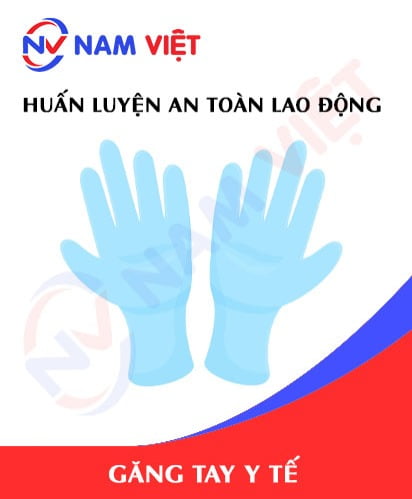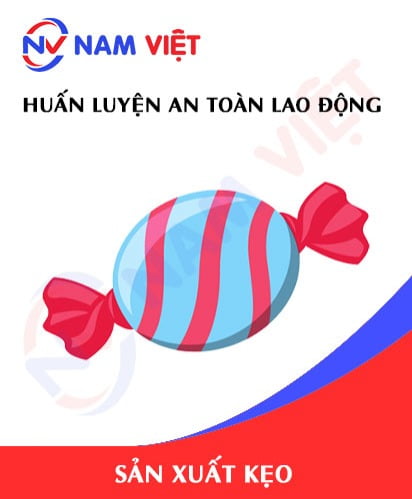Occupational Safety Training for Starch Manufacturing
99,000 ₫
Note: The above price is calculated for one person, the price may fluctuate depending on the number of trainees participating in the course and the market movement. For more accurate price support, please refer to the price list or contact our consulting staff directly.
Occupational safety is an important issue in starch manufacturing factories and needs to be addressed promptly to ensure the health and safety of workers and to enhance the reputation of businesses. The Occupational Safety Training course is one of the effective solutions to raise awareness of how to prevent occupational accidents for workers when participating in starch manufacturing.
Table of Contents
Toggle1. Overview of Starch
a. What is starch?
- Starch is a type of polysaccharide belonging to the carbohydrate group, widely found in nature but mainly extracted from rice, corn, potatoes, cassava, and other tubers. Starch is an important source of energy for humans and animals, as well as a main ingredient in food and industrial products. Depending on the use and processing method, starch can be processed into many different products such as flour, bread, biscuits, buns, rice noodles, tapioca noodles, jelly drinks, soft drinks, and other sweets.
- The starch manufacturing industry is an important industry in Vietnam with many enterprises and factories operating across regions. According to statistics from the General Statistics Office of Vietnam, in 2020, starch output reached about 1.6 million tons, an increase of 5.6% compared to 2019. The provinces with the highest starch production in Vietnam include: Soc Trang, An Giang, Tien Giang, Binh Dinh, Hau Giang, Ca Mau, Vinh Long, Dong Thap, and Can Tho.
- However, the starch manufacturing industry in Vietnam still faces many issues that need to be resolved such as lack of experience and technology, low-quality products, environmental pollution, lack of investment in research and development, and price competition with countries in the region and the world.
- To develop the starch manufacturing industry in Vietnam, it is necessary to invest and improve technology quality, enhance production management and product quality, strengthen research and development, and create favorable conditions for enterprises in the industry.

b. Types of machinery in starch manufacturing
There are many types of machinery used in the starch manufacturing process, including:
- Cassava and potato washing machine: Used to clean raw materials such as potatoes and cassava before the starch manufacturing process.
- Grinding machine: Used to grind washed potatoes and cassava into material for starch manufacturing.
- Pressing machine: Used to press the ground material to extract starch liquid.
- Mixing tank: Used to mix starch with water to create a starch mixture.
- Drying machine: Used to dry the starch mixture so the product reaches the desired moisture and quality.
- Packing machine: Used to pack starch products after the manufacturing process.
These machines are used in the starch manufacturing process to increase productivity, reduce time, and ensure product quality.

c. Starch manufacturing enterprises in Vietnam
Currently, Vietnam has many enterprises manufacturing starch from different raw materials, including:
- Son Ha Group Joint Stock Company: One of the largest starch manufacturing enterprises in Vietnam, Son Ha manufactures cassava starch, tapioca starch, corn starch, potato starch, and flour used in food, pharmaceuticals, and industry.
- Thien Long Group Joint Stock Company: Thien Long manufactures cassava starch, tapioca starch, and corn starch for use in food, paper, pharmaceuticals, and industry.
- C.P Group Joint Stock Company: C.P manufactures starch from cassava and corn for use in food, beer, and industry.
- Viet My Agricultural Products Joint Stock Company: Viet My manufactures cassava starch, tapioca starch, and flour used in food and industry.
- Tan Bien One Member Limited Company: Tan Bien manufactures cassava starch, tapioca starch, and flour used in food and industry.
In addition, there are many other starch manufacturing enterprises such as Dung Quat Garment Co., Ltd, Anh Vu Food Co., Ltd, An Giang Group Joint Stock Company, Bac Mien Trung Cassava Starch Co., Ltd, Bich Tien Manufacturing Trading Service Co., Ltd, Tam Tam Manufacturing Trading Co., Ltd, etc.
d. Specific jobs in starch manufacturing factories
Group 1
- General director, deputy general director, department heads in starch manufacturing factories.
Group 2
- Safety officers: manage safety in the factory, design safety procedures, supervise and urge employees to comply with safe working procedures.
Group 3
- Raw material preparation: main raw materials for starch manufacturing are potatoes, cassava, corn, sweet potatoes… Preparation work includes selecting and checking raw material quality, washing, cutting evenly, and feeding into pressing machines.
- Starch pressing: after raw materials are prepared, they are pressed through machines to separate starch and water. The pressing process uses equipment such as water separation presses, biomass presses, and hammer presses.
- Starch drying: after starch is separated, it is dried using drying equipment such as drying kilns and hot air dryers.
- Packing and storage: starch is packed into suitable packaging for storage and consumption, including nylon bags, PP bags, cartons…
- Product quality management: ensure all starch products meet quality requirements and are safe for consumers.
- Machine cleaning and maintenance: ensure machines are always in good working condition, meet production needs, and ensure worker safety.
Group 4
- Office work, service, sales, marketing.
- Production management, quality management, human resources management, material management, financial and accounting management.
- Research and development of new products, packaging design.

2. Overview of starch manufacturing occupational safety training
In this article, we focus on issues related to group 3, because group 3 is the group directly involved in manufacturing, facing the highest occupational safety risks. Refer to other groups here
a. What is group 3 occupational safety training?
- Group 3 occupational safety training consists of classes providing awareness on how to prevent workplace accidents for workers.
- The occupational safety training course will help workers identify and avoid hazards, minimizing the risks of workplace accidents while working.
REGISTER FOR OCCUPATIONAL SAFETY TRAINING SERVICE
b. Training duration
Initial occupational safety training duration
- Total training duration is at least 24 hours, including examination time.
- 8 hours of theory on occupational safety and hygiene laws and regulations
- 8 hours of theory on basic occupational safety and hygiene knowledge
- 4 hours of theory on specialized training content
- 2 hours of practical training on specialized content
- 2 hours of theory test at the end of the training course
The training center will allocate time into multiple training sessions depending on the schedule arrangement for employees. Normally, there will be 6 training sessions over 3 days, provided that the manufacturing enterprise can arrange continuous learning time.
Periodic occupational safety training duration
- Before the occupational safety card expires, employees who want to renew must attend periodic occupational safety training, with periodic training duration equal to at least 50% of the initial training duration.
Explanation: The total periodic occupational safety training duration is at least 12 hours, including examination time. After completing the periodic training course and passing the test, workers will be reissued or extended with an occupational safety card.
c. Training content
| No. | TRAINING CONTENT | TRAINING DURATION (HOURS) | |||
| Total | Including | ||||
| Theory | Practice | Test | |||
| I | System of policies and laws on occupational safety and hygiene | 8 | 8 | 0 | 0 |
| 1 | Overview of the system of legal documents on occupational safety and hygiene. | 6 | 6 | ||
| 2 | System of standards and technical regulations on occupational safety and hygiene. | 1 | 1 | ||
| 3 | Specific regulations of state management agencies on occupational safety and hygiene when constructing new, expanding, or renovating facilities for manufacturing, using, storing, and testing machinery, equipment, materials, and substances subject to strict occupational safety and hygiene requirements. | 1 | 1 | ||
| II | Basic knowledge of occupational safety and hygiene | 8 | 8 | 0 | 0 |
| 1 | Basic knowledge of hazardous and harmful factors in the workplace. | 4 | 4 | ||
| 2 | Methods of improving working conditions. | 1 | 1 | ||
| 3 | Safety culture in manufacturing and business. | 1 | 1 | ||
| 4 | Rights and obligations of employers and employees; policies and regimes on occupational safety and hygiene for employees; functions and tasks of the occupational safety and hygiene network. | 1 | 1 | ||
| 5 | Rules of occupational safety and hygiene, signs, safety and hygiene instructions, and use of safety equipment and personal protective equipment; skills in first aid for workplace accidents, and prevention of occupational diseases. | 1 | 1 | ||
| III | Specialized training content | 6 | 4 | 2 | 0 |
| Comprehensive knowledge of types of machinery, equipment, substances that generate hazardous and harmful factors; analysis, assessment, risk management of occupational safety and hygiene, safe working procedures with machinery, equipment, and substances subject to strict occupational safety and hygiene requirements. | 6 | 4 | 2 | ||
| IV | Final test on occupational safety training content | 2 | 2 | 0 | 0 |
| Total | 24 | 22 | 2 | ||
See more training content of 6 groups
d. Occupational safety card
After completing the occupational safety training course and passing the test, workers will be granted an occupational safety card (commonly referred to as a group 3 occupational safety certificate ).
The group 3 card will clearly show information such as full name, date of birth, job, and specific working environment. It also includes training duration, red seal, and signature confirming completion of the course.
According to the card issuance regulations stated in Clause 2 of Article 24 of Decree 44/2016/ND-CP, there are two cases:
- If the employer and employee have a labor contract, the employer must sign and stamp the safety card for group 3 employees after completing training at an occupational safety training unit and passing the test.
- If the worker is freelance or seasonal without a labor contract, the training unit must sign and stamp the safety card after the worker completes training and passes the test.

3. Identifying hazards affecting workers in starch manufacturing
Some major hazards that can affect workers in the starch manufacturing process include:
- Workers may be exposed to toxic chemicals such as water treatment chemicals, detergents, disinfectants, antioxidants, enzyme decomposition agents, and pesticides.
- Operating starch manufacturing machinery can cause accidents such as collisions, cuts, fractures, and explosion hazards.
- A dirty and humid working environment can cause respiratory and skin diseases such as bronchitis, pneumonia, rhinitis, and skin allergies.
- Handling starch can generate fine dust that causes breathing difficulties, irritation to the eyes, throat, and lungs of workers.
- During starch manufacturing, workers may suffer from food poisoning due to the use of toxic chemicals.
- If electrical equipment in the factory is not regularly maintained, not properly insulated, or waterproofed, it will pose the risk of electric shock to workers during production.
4. Common types of occupational accidents occurring to workers in starch manufacturing
The common types of occupational accidents that occur during starch manufacturing include:
- Machinery-related accidents: In starch factories, workers often work with many machines and electronic equipment used in the manufacturing and processing of starch. During use, maintenance, or component replacement, workers are prone to accidents such as entrapment, collision, electric shock, and explosions.
- Chemical-related accidents: During the process, starch needs to be treated with chemicals such as sulfuric acid, sodium hydroxide… These highly corrosive substances can cause burns, skin irritation, and inhalation can lead to respiratory problems, sometimes life-threatening.
- Fire and explosion accidents: The use of fuels, raw materials, and additives in starch production can lead to fire and explosion accidents, causing damage to lives and property.
- Accidents caused by unsafe materials and equipment: During starch manufacturing, workers are often exposed to many unsafe materials and equipment. For example, small broken plastic or metal fragments can fly out and scratch the skin or injure workers’ eyes.
- Human error accidents: Starch manufacturing is a job that requires workers’ attention and caution. Mistakes such as not wearing full protective equipment, not following procedures, or violating occupational safety regulations can lead to tragic accidents.
5. Safety measures when participating in starch manufacturing
The safety measures when participating in starch manufacturing are as follows:
- Ensure personal hygiene: The most important thing in starch manufacturing is ensuring personal hygiene. Employees must wear protective equipment including helmets, masks, protective glasses, aprons, and safety shoes. This helps protect workers from harmful substances that may affect their health.
- Ensure machinery safety: Starch is manufactured using complex equipment and machinery, therefore employees must be trained on how to use machines safely. Equipment and machines must be regularly maintained and inspected to ensure user safety.
- Use chemicals safely: Chemicals used in starch manufacturing must be safe and used correctly. In addition, employees must be trained to use chemicals properly and ensure there are no leaks or spills.
- Control water sources: The water used in starch manufacturing must be regularly tested to ensure there are no contaminants and that clean water is provided to ensure workers’ safety.
- Employee training and coaching: Employees must be fully trained and coached on safety measures during starch manufacturing to ensure their own safety and that of their colleagues.
- Have a fire prevention and firefighting plan: Starch factories must have a complete fire prevention and firefighting plan to ensure the safety of employees and property.
- Regularly organize occupational environment monitoring in factories, collect and analyze harmful factors to workers, thereby adjusting to reduce risks and prevent occupational diseases for them.

6. Benefits of occupational safety training in starch manufacturing
An Toan Nam Viet provides your enterprise with great benefits after completing occupational safety training courses according to the regulations of Decree 44/2016/ND-CP on occupational safety and hygiene, for companies, factories, and enterprises.
- Workers can identify potential occupational accident risks and take preventive measures to avoid accidents.
- Your enterprise can establish risk prevention measures in manufacturing, operation, and maintenance processes.
- Minimize costs in case of occupational safety risks.
- Uninterrupted production helps increase labor productivity and product quality.
- Ensure compliance with occupational safety laws, avoiding legal risks.
- Create credibility and professionalism in all aspects, thereby enhancing the brand for your enterprise.
The training courses of An Toan Nam Viet are solutions to prevent and combat external impacts on individuals so that they can avoid dangers that may lead to injury or even death.
REGISTER FOR OCCUPATIONAL SAFETY TRAINING SERVICE
7. Customer feedback after completing occupational safety training in starch manufacturing
An Toan Nam Viet has many years of experience in its mission to accompany many enterprises in Vietnam in general and in the southern provinces in particular. That responsibility for An Toan Nam Viet is extremely valuable, which is why the occupational safety training work of An Toan Nam Viet is increasingly emphasized and professional. The motivation for An Toan Nam Viet to grow strongly to the present comes from both positive feedback and contributions from enterprises. Below are the feedback from partners we have served.
Bac Nam E&C Investment and Construction Joint Stock Company
“This is the first time using the service at An Toan Nam Viet and I was very surprised by the enthusiastic 24/7 support of the consulting team. The organization of the class was very quick and convenient for our company, thank you very much for the service of An Toan Nam Viet!”
Hoa Dat Construction and Trading Joint Stock Company
“The service of An Toan Nam Viet has helped us a lot in simplifying occupational safety and completing safety documents for the working process. The consulting team was enthusiastic and timely in answering our questions. 5 stars for An Toan Nam Viet.”
See more customer interviews after using the service of An Toan Nam Viet
8. Occupational Safety Training capacity of An Toan Nam Viet
An Toan Nam Viet is a reputable and high-quality occupational safety training center in Vietnam today. Occupational safety training sessions are continuously held at manufacturing workshops, factories, or construction sites across the country (63 provinces in Vietnam).
REGISTER FOR OCCUPATIONAL SAFETY TRAINING SERVICE
License for occupational safety training
- An Toan Nam Viet has been inspected and certified by the Occupational Safety Department of the Ministry of Labor – Invalids and Social Affairs for meeting the conditions for occupational safety and hygiene training. This further strengthens the training capacity of occupational safety training of our center.

Documents and lectures
- Before occupational safety training documents are applied in training courses, they are reviewed and approved to ensure accuracy and effectiveness when applied.
- The teaching methods of lecturers are standardized according to the teaching standards of An Toan Nam Viet, which are methods studied and summarized by experts in occupational safety and hygiene training to bring the highest knowledge absorption efficiency to learners.
Facilities
- Controlling classroom factors affecting the training process increases teaching performance and learners’ knowledge absorption efficiency.
- Facilities supporting training courses are always arranged with spacious classrooms meeting standards of area, lighting, and training equipment, etc.
9. Reputable nationwide high-quality occupational safety training center
At An Toan Nam Viet, we always put our dedication to occupational safety training as the top priority. For us, imparting self-protection knowledge to workers so they can have safe baggage on their career path is a contribution to building the country.
To ensure effective training, we carefully and meticulously prepare every detail, no matter how small. From preparing tools, teaching equipment to curriculum, documents, sound, and lighting.
Our occupational safety trainers are experts with many years of experience in the field. They even have research projects identifying hazards in all industries and how to prevent them.
Lectures from trainers are summarized from practice and delivered in the most vivid and understandable way to workers. Those factors help workers feel comfortable during learning and absorb knowledge effectively. Of course, the knowledge delivered always complies with Decree 44/2016/ND-CP.
Therefore, workers can grasp many measures to prevent hazards and protect themselves, while applying them most appropriately in actual work.
Our occupational safety training center is proud to provide professional, reputable occupational safety training services with the following advantages:
- Competitive training costs while ensuring training quality.
- Flexible training schedule according to the company’s production situation.
- Quick and legal occupational safety training certification procedures.
- Trainers with many years of experience in the field.
- Classrooms are controlled for factors affecting the training process, increasing teaching efficiency and knowledge absorption of learners.
- Lectures are compiled to suit occupational safety work at enterprises.
- An Toan Nam Viet works dedicatedly and professionally to support customers accurately and quickly.

10. Additional reference documents on occupational safety training in starch manufacturing
- Starch manufacturing occupational safety document (starch)
- Occupational safety training document set
- Occupational safety training test set
- Occupational safety multiple-choice test in starch manufacturing (starch)
- Occupational safety training lecture slides in starch manufacturing (starch)
11. Occupational safety training activities in starch manufacturing
1 review for Occupational Safety Training for Starch Manufacturing
No comments yet















namchinh.haiphong341
Dịch vụ huấn luyện an toàn lao động rất tốt nhé, giảng viên dạy rất sinh động dễ hiểu!